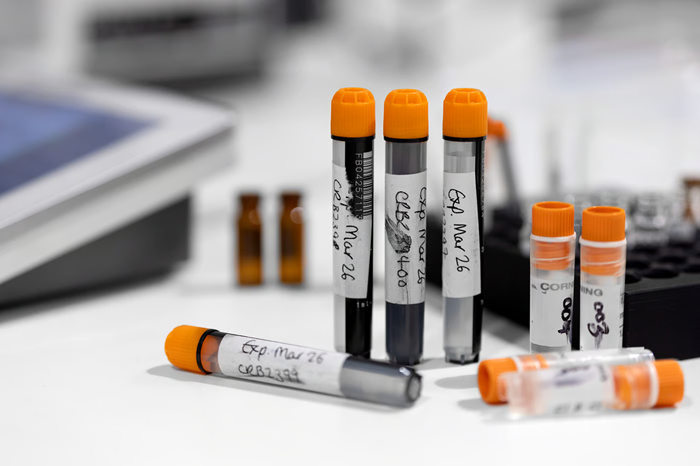Sponsored by LabmanReviewed by Maria OsipovaNov 19 2025
Laboratory technicians encounter various challenges in labeling, marking, and tracking vials, particularly in busy research, clinical, or industrial settings. This article takes a closer look at the issues that influence precision, efficiency, and data integrity – the hidden bottleneck in countless laboratories.

Image Credit: Labman
Surprisingly, many laboratories depend on handwritten, smudged, or half-peeling labels on vials.
Despite significant advancements, vial labeling remains one of modern laboratories' most frustrating and overlooked challenges. Common problems include:
1. Common Label Struggles
- Manually writing or printing small labels for hundreds of vials is tedious, time-consuming, and susceptible to error
- Labels that fall off, smudge, or fade after freezing or autoclaving
- Limited space, forcing staff to create cryptic codes that are difficult to interpret later.
2. Tracking Challenges
- Barcodes that are too small or curved for adequate scanning
- Vials lost between prep and analysis or reappearing weeks later
- Spreadsheets are still used as the tracking system
- No simple method to determine sample location, handler, or status.
3. Human Intervention
- Fatigue from repetitive labeling tasks
- Training new personnel on unique systems of abbreviations and naming conventions
Vial labeling has failed to keep pace with lab automation. Despite silently draining productivity and affecting everything from data integrity to compliance, it continues to be treated as a minor task.

Image Credit: Labman
Where is the Opportunity?
Laboratories are re-evaluating vial identification entirely, moving away from consumable labels and fragile adhesives toward direct, permanent marking.
The goal is to avoid peeling, fading, and replacements, while enabling clear, precise, and lasting identification, even after freezing, washing, or sterilizing.
This new approach improves speed and consistency while eliminating human error and the need for endless rolls of labels.
Labman Automation offers solutions that remove the need to relabel hundreds of vials by hand, prevent sample loss due to smudged labels, and improve scanning capabilities.
Acknowledgments
Produced from materials originally authored by Katie Simpson at Labman Automation.

This information has been sourced, reviewed, and adapted from materials provided by Labman.
For more information on this source, please visit Labman.